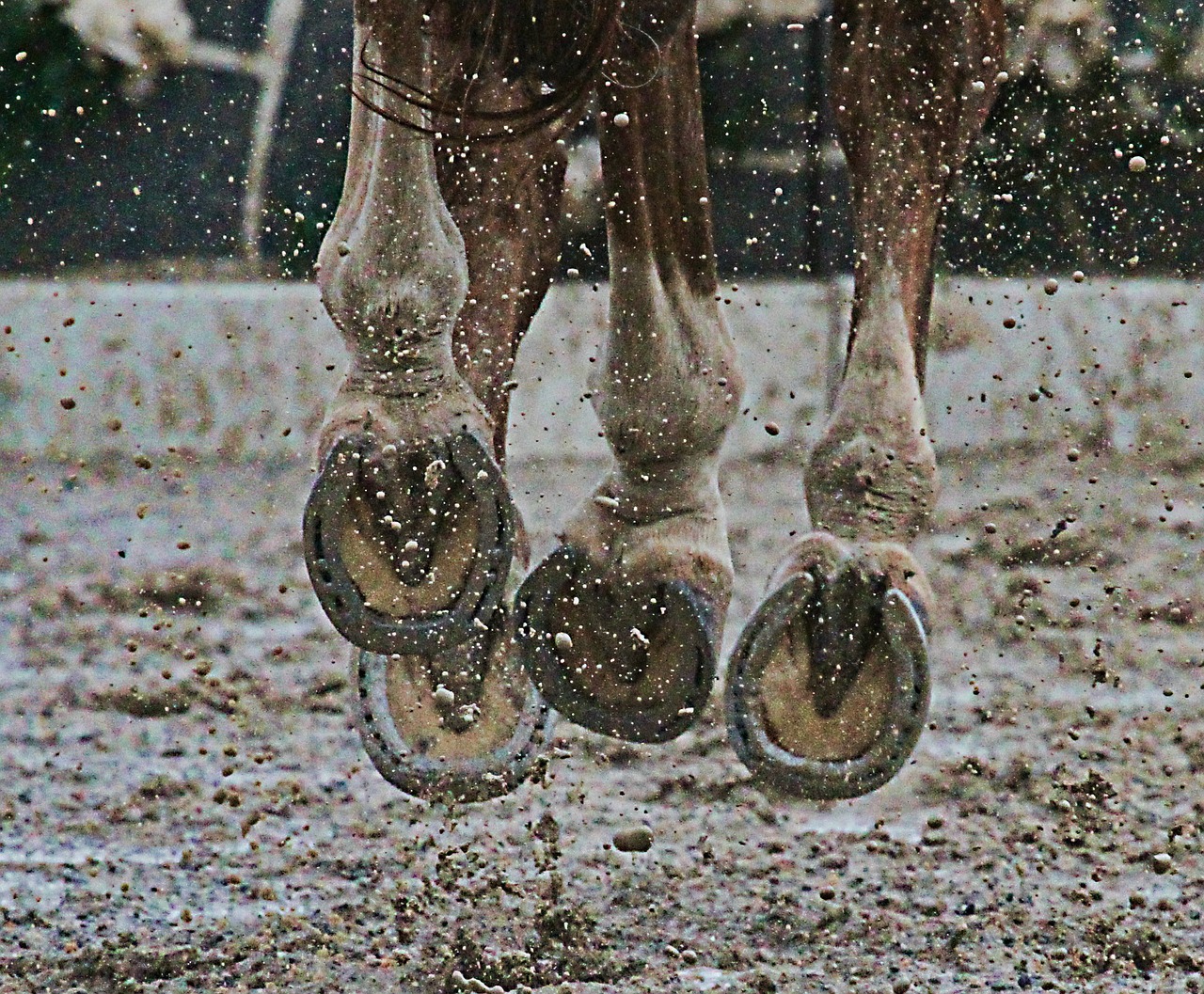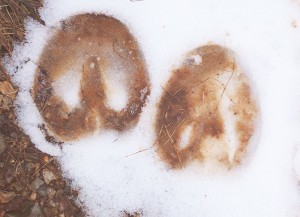Wet Weather Hoof Troubles: Thrush and Abscess
While we are always grateful for precipitation here in Colorado, wet and muddy conditions contribute to the development of two common horse hoof conditions: abscesses and thrush.
Abscesses
A hoof abscess commonly presents as an acute onset severe lameness without obvious signs of injury. Abscesses occur when bacteria is trapped within the foot. Wet conditions can soften the foot, allowing easier access of bacteria. A deep bruise, hot nail, or other foreign body can also lead to abscess formation. Horses with poor hoof quality or white line disease can be more susceptible to abscesses.

Exam findings that help your vet localize the lameness to the foot include an increased digital pulse, localized warmth of the foot, and sensitivity to hoof testers. Radiographs may be recommended to rule out other more serious problems or foreign bodies. In some cases, radiographs may show a tell-tale pocket of gas (infection).
Most abscess resolve in about 7-10 days. The key to improved comfort is drainage of the abscess, resulting in relief of pressure. Care during this time includes application of a poultice to allow drainage while also keeping the foot clean. The most common methods used are a medicated poultice pad (Animalintex) or packing the foot with magnapaste. Both methods help draw out infection and are much easier (and more quickly successful) than soaking your horse’s foot in a bucket of warm water and Epsom salt. A drainage tract is needed for healing, but this tract can potentially allow more bacteria back into the foot, so a proper foot wrap over a poultice pad or magnapaste is essential for cleanliness. Elastikon and duct tape are invaluable for a good foot bandage!
Thrush
Thrush is another common hoof condition linked to wet conditions. You may notice a strong odor when picking your horse’s feet, and wet dark material along the sides and center of the frog. The odor is due to infection with anaerobic bacteria (bacteria that thrive in areas with little to no oxygen). Severe infection can cause sensitivity when using the hoof pick or pressing on infected areas, and sometimes lameness.

Poor hoof conformation and infrequent farrier care can contribute to the development of thrush. Treatment options for thrush include topical drying/antibacterial products (Thrushbuster, dilute betadine, copper sulfate, etc) and farrier work to remove exfoliating frog that may trap additional moisture. A dry environment is also critical.
Observing an acute onset severe lameness in your horse warrants at least a conversation with your vet and most likely an exam. Good management, including a clean dry environment, regular farrier care, and checking/picking out your horse’s feet daily can help minimize his risk of developing a hoof abscess or thrush.


